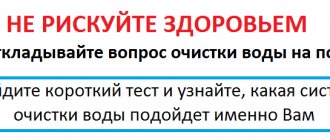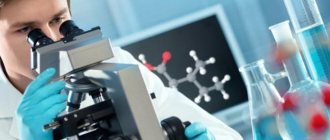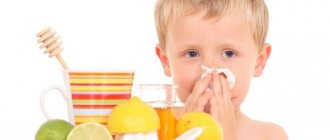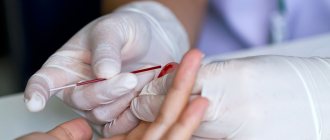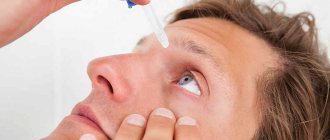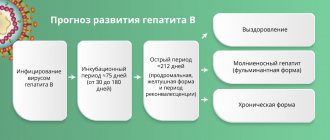general characteristics
Creatinine is the end product of creatine breakdown, which plays an important role in the energy metabolism of muscle and other tissues. Its formation directly depends on the state of muscle mass. Creatinine is excreted by the kidneys (it is excreted only by the glomeruli and, unlike urea, is not reabsorbed in the renal tubules), therefore a decrease in creatinine excretion in the urine and an increase in creatinine in the blood is observed in patients with kidney damage. Daily urinary excretion of creatinine depends on gender, age, and total muscle mass. In combination with serum creatinine, it is used to calculate creatinine clearance and assess renal function.
Detailed description of the study
Creatinine is the end product of the metabolism of nitrogen-containing compounds in the body. Nitrogen metabolism is the reaction of the formation and breakdown of nitrogenous compounds, which include proteins, vitamins, hormones, and nucleic acids. It is part of energy metabolism.
Creatine is a precursor to creatinine. It is formed from amino acids - arginine, glycine, methionine - in the kidneys and liver. In the muscles, under the influence of enzymes, it is converted into creatine phosphate, which serves as a source of energy for movement. After detachment of the phosphorus group, creatinine is formed, which is excreted in the urine.
A healthy person excretes a certain amount of creatinine per day and this figure is constant. Its value depends on the person’s muscle mass, on average it is 10-25 mg in women, and 15-30 mg in men.
Creatinine is excreted by the kidneys and is practically not reabsorbed, that is, it is not absorbed in the tubules and does not enter back into the blood. Therefore, creatinine clearance—the time it takes for creatinine to be cleared from the body—is used to determine the glomerular filtration rate. The value is calculated by measuring the level of creatinine in urine and blood over a certain time and estimating the volume of urine per day.
If kidney function is impaired, the excretion of creatinine in the urine decreases. A decrease in glomerular filtration is observed in renal failure, glomerulonephritis, etc. Causes of renal failure: decrease in circulating blood (during bleeding), damage to kidney vessels, urolithiasis, autoimmune processes, toxic damage from drugs. Clinically, renal failure is manifested by the occurrence of severe thirst, edema, nausea, vomiting, and weakness.
A decrease in the amount of creatinine in the urine also occurs with a decrease in muscle mass due to various diseases: myositis, paralysis, paresis, muscular dystrophy. The latter include Duchenne muscular dystrophy, a genetic disease associated with impaired protein formation for muscle contraction. It manifests itself in childhood and progresses rapidly until complete immobilization occurs.
An increase in the amount of creatinine in the blood and urine occurs with increased glomerular filtration, for example, with diabetes, pregnancy, and infections. Also, an increase in level occurs with injuries, burns, hypothyroidism, acromegaly. Acromegaly is a neuroendocrine disease characterized by disproportionate growth of bones and soft tissues.
Determining the amount of creatinine in daily urine, in contrast to one-time urine, allows you to most fully assess its clearance, promptly identify disorders in the kidneys and prescribe treatment.
Patient preparation rules
urine
Notes:
Any portion of urine, regardless of the time of day, is collected after toileting the external genitalia.
Deliver the biomaterial to the ML department of DILA within 2 hours after collecting the last portion. daily urine Notes:
Perform the first morning urination in the toilet.
Collect all further daily urine, including the morning portion of the next day, into a container (important - the volume of the container must be sufficient for the expected amount of urine per day). During the entire collection period, keep biological material in a cool place, protected from light. After the collection is completed, determine the daily volume of collected urine, mix, pour 30-40 ml into a standard urine container and deliver to the ML DILA department within 2 hours after collecting the last portion. morning urine Notes:
The morning portion of urine is collected after toileting the external genitalia.
You can add this study to your cart on this page
Urine collection instructions
The nurse will give you the necessary supplies:
- plastic container for collecting urine; manual urinal (issued to men);
- a cup for collecting urine (issued to women);
- if you are receiving hospital treatment, you may be given a bedpan;
Immediately before the start of daily urine collection
You must begin counting the urine collection period with an empty bladder. Immediately before the start of the daily collection, urinate in the toilet and flush. Then write down the date and time. This moment will be the beginning of the urine collection period. The collection will end in 24 hours.
Collection start date: ___________________ Collection start time: _________________
During the 24-hour urine collection period
- Collect all urine. Urinate only into a urine bag, urine collection cup, or bedpan. To use a urine collection cup, place it under the toilet seat and urinate into it.
- If you are in hospital, seek help if necessary.
Interpretation:
- Often called “hyperfiltration”, it is detected in the following conditions: physical activity, acromegaly, gigantism, diabetes mellitus (before clinical manifestations of diabetic nephropathy), infections, hypothyroidism, meat food, increased cardiac output, pregnancy, burns, carbon monoxide poisoning, increased metabolism, anemia.
- Indicates a decrease in glomerular filtration rate, detected in the following conditions: hyperthyroidism, anemia, paralysis, muscular dystrophy, diseases with a decrease in muscle mass (for example, neurogenic atrophy, polymyositis, etc.), inflammatory and metabolic diseases.
Sample result (PDF)
Creatinine
Creatinine is a product of the non-enzymatic breakdown of creatine and creatine phosphate, which is formed in muscles. It is excreted from the body by the kidneys.
Research method
Kinetic method (Jaffe method).
Units
μmol/L (micromoles per liter).
What biomaterial can be used for research?
Venous, capillary blood.
How to properly prepare for research?
- Do not eat for 12 hours before the test.
- 30 minutes before the analysis, eliminate physical and emotional stress.
- Do not smoke for 30 minutes before donating blood.
General information about the study
Creatinine is a residual product produced in muscles when a substance called creatine is broken down. Creatine is part of a cycle that provides the body with energy to contract muscles. After 7 seconds of intense physical activity, creatine phosphate is converted to creatine, which then turns into creatinine, which is filtered in the kidneys and excreted in the urine. Creatine and creatinine are stably produced by our body in constant quantities. Almost all creatinine is excreted by the kidneys, so its concentration in the blood is a good indicator of kidney function. The amount of creatinine produced depends on total body weight and, in particular, muscle mass. Therefore, for example, creatinine levels in men will be significantly higher than in women and children.
What is the research used for?
- To assess renal function.
- To assess the function of major organs and systems.
- To assess renal dysfunction and the effectiveness of its treatment.
- If the level of creatinine in the blood and urine is known, the creatinine clearance (Rehberg test) can be calculated - this test shows how effectively the kidneys filter small molecules such as creatinine from the blood.
- To calculate the glomerular filtration rate to confirm kidney damage.
What do the results mean?
Reference values (creatinine norm):
| Age, gender | Reference values |
| 13 – 15 years | 50 – 77 µmol/l |
| > 15 years old, male | 62 - 106 µmol/l |
| > 15 years old, female | 44 - 80 µmol/l |
Causes of increased creatinine levels
- Acute and chronic renal failure.
- Insufficiency of the cardiovascular system.
- Massive destruction of muscle tissue.
- Burns.
- Acromegaly.
- Gigantism.
- Hyperthyroidism.
- Dehydration.
- Excessive physical activity.
- Excessive consumption of meat products.
- Radiation sickness.
- Obstruction of the urinary tract.
- Taking nephrotoxic drugs.
- Glomerulonephritis.
- Bacterial kidney infection (pyelonephritis).
- Necrosis of the tubular epithelium (acute tubular necrosis).
- Prostate diseases causing obstruction of the urinary system.
Reasons for decreased creatinine levels
- Starvation.
- Overhydration.
- Amyotrophy.
Important Notes
The creatinine content is reduced in pregnant women by almost half due to an increase in blood volume (hypervolemia), increased blood flow in the kidneys and, accordingly, an increasing degree of filtration; all this leads to an increase in creatinine clearance (excretion in urine).
In older people, creatinine formation normally decreases; this must be taken into account when determining the severity of their kidney disease.
What may affect the results
Factors that may distort the results of the study:
- Violation of hygiene procedures and urine collection techniques.
- Drinking large or small amounts of water.
- Consuming foods, medications, or dietary supplements that change the color of urine.
- Menstruation.
- High blood pressure.
- Intense physical and psycho-emotional stress on the eve of urine collection.
- Visiting a bathhouse, sauna, hypothermia.
- Carrying out invasive procedures on the urinary tract a week before the test.
You can take a general urine test at the nearest INVITRO medical office.
A list of offices where biomaterial is accepted for laboratory research is presented in the “Addresses” section. Urine examination includes the study of physical and chemical properties, as well as microscopy of sediment.
Physical properties: quantity, color, odor, transparency, relative density (specific gravity), urine reaction (pH).
Chemical properties: determination of protein, glucose, ketone bodies, urobilinogen, bilirubin, hemoglobin, nitrites, leukocyte esterase.
Microscopy: identification of erythrocytes, leukocytes, cells of flat, transitional and renal epithelium, cylinders, crystals, mucus, bacteria, fungi.
Cooking and eating
Boiling, baking, light frying. Food is prepared without salt. Diet 5-6 times a day.
Allowed
Bread and flour products: protein-free salt-free bread with corn starch - 100 g, in its absence 50 g of wheat salt-free bread or other flour products baked with yeast without salt
Soups: vegetable, potato, fruit. Season with boiled sauteed onions, sour cream, herbs
Meat and poultry: lean beef, veal, meat and trimmed pork, lamb, rabbit, chicken, turkey
Fish: low-fat, after boiling you can bake or fry Dairy products: milk, cream, cottage cheese, sour cream
Eggs: in dishes – 1/4-1/2 eggs per day or 2-3 per week (soft-boiled, omelet)
Cereals: protein-free pasta. With water and milk in the form of porridges, puddings, casseroles, pilaf, cutlets
Vegetables: potatoes and vegetables in any preparation
Appetizers: vinaigrettes without pickles, fresh vegetable salads
Fruits, vegetables, sweet dishes: various fruits and berries, raw and boiled, compotes, jelly, jelly, honey, jam, candy
Drinks: weak tea with lemon, juices from fruits and berries, incl. tomato, rosehip decoction
Fats: unsalted butter, ghee and refined vegetable oils
Normal indicators
| Index | Result |
| Quantity | 50 ml |
| Color | Colorless, light yellow, straw yellow, yellow, amber yellow |
| Smell | Odorless or non-specific |
| Transparency | Transparent |
| Relative density of urine (specific gravity) | 1003-1035 |
| Urine reaction (pH) | 5.0-8.0 (in children under 1 month – 5.0-7.0) |
| Protein | > 0.140 g/l |
| Glucose | > 2.8 mmol/l |
| Ketone bodies | > 1 mmol/l |
| Urobilinogen | > 34 mmol/l |
| Bilirubin | Not detected |
| Hemoglobin | Not detected |
| Leukocyte esterase | Not detected |
| Nitrites | Not detected |
| Red blood cells | Up to 2 cells per field of view |
| Leukocytes | Up to 5 cells in field of view |
| Epithelium | Up to 5 squamous epithelial cells per field of view |
| Cylinders | Not detected |
| Crystals | Little or no detectable amounts of urates, calcium oxalates, amorphous phosphates |
| Slime | In small quantities |
| Bacteria | Not detected |
| Fungi | Not detected |
